Politics
“The impact on the population can be compared to ecocide”

How the operations of a gold mining company in Georgia are devastating the lives of ethnic Azerbaijanis
In the Bolnisi district of Georgia, where ethnic Azerbaijanis predominantly live, gold, silver, and copper have been mined since the Soviet era. This process continued even after Georgia gained independence. As mining operations grew, the mining zones extended into the villages. These operations provoked public unrest. Since 2022, protests have been held in several villages in the district.
The gold mining works are carried out by the well-known regional company RMG (Rich Metals Group), owned by Russian investors. The company is located in the village of Kazreti in the Bolnisi district.
According to official data…
The Sakdris gold deposit is being mined near Kazreti. Some archaeologists believe that the Sakdris mine is the oldest gold mine in the world.
In 2006, the mine was granted protection under the Law on Cultural Heritage, but in 2013, the Georgian Ministry of Culture revoked this status, claiming that the mine had been added to the cultural heritage list in violation of procedures.

This decision, which locals believe was made to benefit the RMG Gold company in its quest for permission to mine gold through open-pit extraction, sparked protests from cultural heritage advocates and others.
The problem lies in the fact that the village’s land irrigation relies on the Kazreti Canal, a 31-kilometer-long waterway that begins at the confluence of the Mashavera and Kazreti rivers.
Official reports from independent German research organizations, along with the Georgian Environmental Research Agency, indicate that the waters of the Mashavera River and the Kazreti Canal are polluted with harmful metals from mining operations run by foreign investors.
A brief overview of the company
Since 2012, the Rich Metals Group companies—RMG Gold, RMG Copper, RMG Auramine, and Caucasus Mining Group—have been operating in the mining sector in Georgia, primarily in the Bolnisi, Dmanisi, and Tetritskaro regions. The company continued its operations, upgrading the facilities that were left over from the Soviet era.
RMG obtained licenses to explore and extract metal ores in Kvemo Kartli, as well as for the existing mining operations at "Madneuli" and "Kavartsit." The company currently employs over 4,200 people.
“We decided something must be done”
When drilling started near villages with a significant ethnic Azerbaijani population in the Bolnisi district, regional activists joined the local residents’ protests.
In 2022, amid growing tensions between RMG representatives and the residents of Mushevani village in the Bolnisi district, activists visited the village to assess the situation.
One of them was Rabil Ismail, the co-founder of the “Salam” platform.

According to Rabil Ismail, the village of Mushevani is one of many that receives no attention from either the municipality or the central government:
“Our environmental work, personally mine, as well as the platform ‘Salam’ which I represent, started here, in this village, in 2022. The local youth reached out to us for help with the problem they were facing. We met with them and decided something must be done about this.”
According to expert Nino Gudzharaidze, a representative of the “Green Alternative” organization, the risk to villages in gold mining areas is very high, and the government should carry out regular monitoring in the region:
“Even with the use of the latest and most advanced technologies, gold mining and processing always have a major, often negative, impact on the environment, people, and local communities. When talking about the mining industry in Georgia, it must be taken into account that this enterprise began its activities during the Soviet era and has always been a subject of special relationships. Back in the Soviet times, the owner had the power to do anything they wanted. Since the Soviet era, the company has consistently drawn the attention of various groups with influence in the higher ranks of power. And the company has always been resistant to external scrutiny. The environmental impact of this industry has always been massive. If we focus on the villages where gold is being mined today, the consequences could be severe, particularly in terms of health effects and the contamination of agricultural land.”

“The company agreed to all the demands of the local population”
“In early August, we reached out to the local community and collected signatures for a petition expressing that the residents did not want the company to carry out any activities near the village.
The first pit is located approximately 800–900 meters from the settlement. This means that the next excavation would be conducted precisely there. For over six months, we fought, and in that time, we succeeded in getting both national media and international organizations to highlight the issue”, continues Rabil Ismail.
The activist stated that over the course of these six months, all state agencies and local government bodies worked to create division among the villagers.
In the end, the majority of the population felt it was futile to continue opposing the company and backed down.
“But even in this case, they made demands which the company accepted,” says Rabil. “This company plans to extract about 5 tons of gold, 7 tons of silver, and about 14 tons of copper here. It will receive huge profits. That’s why they accepted all the conditions of the local population. A new initiative group was formed, which was recognized by the local population. These people are now constantly conducting monitoring. They negotiate with the company. They strive to always prioritize the interests of the villagers.”
After 6 months of conflict between the company and the village, a memorandum was signed.
The company allocated 1 million lari for the development of the village. After the memorandum was signed between RMG and the local community, the amount increased four times, and the initiative group, which included local residents, was able to engage more actively in the company’s operations in the village.
“Our local initiative group has the ability to influence decisions regarding tree cutting, halting excavations, and determining the endpoint of the six-year project.” says Rabil.
“Every fruit and vegetable in the markets of Bolnisi, Marneuli, and Tbilisi contains harmful chemicals”
However, the problem extends beyond the village of Mushevani. According to civil activist Rabil Ismail, RMG’s license, valid until 2045, covers a very large area of the Bolnisi district. This list also includes the villages of Poladauri, Samtsverisi, Zemo Bolnisi, and Kvemo Bolnisi.
“Mining sites are now visible in the mountains near the villages of Samtsverisi and Zemo Bolnisi. Waste is being dumped there. Also, in 2021, it was found that the color of the river in Poladauri changed. It became yellowish green. This means that RMG has laid waste disposal lines throughout the ecosystem. For instance, when they dispose of waste near villages, the toxic chemicals eventually make their way into the river. Why did they choose to do this near the village of Poladauri? Because it is the most isolated settlement, with only a forest beyond it.
From there, the waste travels down the river to other villages. Given that the residents of these villages are primarily engaged in agriculture and livestock farming, it can be said that every fruit and vegetable in the markets of Bolnisi, Marneuli, and Tbilisi is contaminated with harmful chemicals.”
Between 2005 and 2011, the University of Gießen in Germany partnered with the Georgian Institute of Agriculture to conduct joint research. Expert Nino Gudzharaidze explains:
“The results were quite alarming, and it was stated that the consequences reached such a scale that it was necessary to consider closing the region and relocating people. Since the heavy metals released during gold mining easily enter the upper layers of the ecosystem and the human food chain, the impact of these metals on human health is no longer a theoretical concern.”
In previous years, studies were also conducted on the impact of waste on women, with research on breast cancer, and the results were quite unpleasant. At that time, it was stated that the impact on the population could be compared to ecocide. But these results were immediately hidden. The research was conducted by a private clinic, which then withdrew its findings. However, this opinion had previously been published in the press.”
RMG does not fulfill the terms of the memorandum
In the mountains of Kepanachi, one of the largest villages in Georgia with a population of about 5,000 people, silver and gold deposits have also been discovered. Research has been ongoing for many years.
This implies that excavations will start here in the coming years, according to Kenan Mamedov, a resident of the village.
Kenan, who actively participated in the protests in Mushevani and was a member of the initiative group formed after the protests, claims that under the current circumstances, RMG is secretly trying to expand its operations and is attempting to violate the terms of the memorandum.
Furthermore, although RMG continues drilling near Mushevani, they are neglecting environmental restoration. This is another problem that worries the locals. Despite repeated appeals to the company, no actions have been taken on their part.
“Two years ago, a memorandum was signed between RMG and the village residents. The first article of the memorandum stated that RMG would not exceed the 11 hectares specified in the project, neither for exploration nor for mining. Now we believe this article has been violated,” says Kenan. “We found that geological surveys, including drilling, were being carried out in several locations towards the village of Mushevani. The consequences of this could be very bad. This means the pit is expanding, not remaining within the 11 hectares. Of course, if the pit expands, it will cause great harm to the village and the people living here.
We want to believe that RMG will not exceed the 11 hectares, but the fact that RMG is currently conducting research beyond the 11 hectares shows that they will not stop.”
Nino Gudzharaidze says that the risk is very high, especially for the villages located in the new gold mining areas.
She emphasizes that the problem concerns not only the pollution of the soil, water, and air.
“In the village of Geta, a conflict broke out over the attempt to build a waste disposal facility. They tried to convince the people that the construction of the facility was safe for them. But for those who lived nearby, there was no need to explain what it was—they already knew it very well. That’s why the conflict escalated to the point where RMG eventually gave up on building a new waste disposal facility and started rebuilding the old ones, but it can be assumed that they haven’t fully abandoned the idea yet.”
“And the struggle began”
In 2023, tensions arose between the residents of the village of Geta – another village in the Bolnisi district – and representatives of the company RMG. The cause of this tension was a reservoir that the company wanted to build for the purpose of washing off waste in areas used by the villagers.
As a result of several days of protests, RMG officially abandoned this project. A resident of the village of Geta, Nasir Namazov, was among those who opposed RMG’s desire to build a reservoir near the village. He actively participated in the protests in the village.

“The cause of people’s discontent was the excavations in the forest where the local livestock grazed. In the spring, people came here to ride horses and take walks. The main problem arose precisely here. Then, seeing these excavations, we went and stopped the machinery working there. After that, we contacted the Salam platform. And the struggle began.
The protest lasted for several weeks. We went to the municipality and held a protest there. We went to the site of the excavations and held protests there. Almost the entire population of the village participated. As a result, we stopped the work. We won against RMG. So far, everything is quiet, but we still don’t trust RMG; they might take some action at any moment. The reservoir that RMG wants to build would destroy an area of more than 90 hectares. As a community, we resisted. RMG has officially abandoned the project for now.
We fought for what rightfully belongs to us. We have no other village, no other home, no other source of income. But they had alternative places where they could build the reservoir. They had several options.”
According to a study by Transparency Georgia conducted in 2015, 96.21% of RMG Gold’s shares belong to the Netherlands-registered company Rich Metals Group, while the remaining shares are owned by RMG Copper JSC.
The CEO of RMG Gold is Russian citizen Sergey Yganov, and the supervisory board includes three members: Sergey Yganov, Alvidas Brusokas, and Vakhtang Faresishvili. Currently, the company’s official website lists Johnny Shubitidze as the executive director. Similarly, the company GPM (GeoProMining), which operates in Armenia, is also owned by Russian businessmen.
This is the reason why, on February 23, 2023, the U.S. Department of the Treasury placed GeoProMining on its sanctions list.
With the support of the Russian Language News Exchange.
The post “The impact on the population can be compared to ecocide” appeared first on MEYDAN.TV.
Politics
Putin to Aliyev: “I hope relations between Moscow and Baku will continue in the spirit of alliance”
During a meeting in Dushanbe, Russian President Vladimir Putin proposed beginning talks with Azerbaijani President Ilham Aliyev by discussing the crash of the AZAL aircraft.
At the meeting on October 9, Putin once again expressed his condolences over the accident and reminded Aliyev that he had apologized during their earlier phone conversation following the tragedy.
“I would like to begin our meeting with the aviation accident that occurred in our airspace. During our first phone call after the incident, I not only apologized for the fact that the tragedy happened in Russian skies but also expressed my deepest condolences to the families of the victims. The investigation is coming to an end, and now we can already speak about the causes of this disaster,” Putin said.
The Russian president also elaborated on the reasons behind the crash:
“There were several causes. The first is that a Ukrainian drone was in the air at the time. On the night of the tragedy, we observed three such drones crossing the border. The second reason relates to technical failures in Russia’s air defense system. There is no doubt that in such tragic situations, everything necessary — including compensation — will be carried out by Russia, and all responsible officials will face legal evaluation of their actions.”
On December 25, 2024, an Azerbaijan Airlines (AZAL) plane flying from Baku to Grozny crashed near Aktau in Kazakhstan.
Of the 67 people on board, 42 were Azerbaijani, 16 Russian, 6 Kazakh, and 3 Kyrgyz citizens. 38 people were killed, and 29 survived.
In June 2025, tensions rose after two ethnic Azerbaijanis detained during a police operation in Yekaterinburg died under torture, and several others were injured. Baku condemned the incidents as “ethnic pressure” and harshly criticized Russian authorities. Additionally, the persecution of Azerbaijani-linked businessmen in Russia — including raids, arrests, and business interference — fueled further discontent.
In response, Azerbaijan shut down the Baku office of “Sputnik”, arrested several Russian citizens on espionage charges, and suspended the activities of the “Russian House” cultural center.
Putin also spoke about bilateral cooperation, noting:
“Despite the tragedy and all the surrounding issues, our economic relations have been developing successfully. Last year, we achieved around 6% growth, and this year it has already exceeded 16%, which is an excellent result. Thanks to your attention, our humanitarian ties have always remained strong. We will do everything to preserve this positive dynamic.”
The Russian president expressed optimism about the future of Moscow-Baku relations:
“I hope that our cooperation will not only be restored but will also continue in the spirit of our alliance. We never forget the treaty we signed recently and will do our utmost to ensure that all its key provisions are implemented,” Putin said.
President Ilham Aliyev thanked Putin for his personal attention to the AZAL plane crash investigation and stressed the importance of continuing economic cooperation:
“I would like to thank you personally for keeping this situation under your attention. We have discussed it many times, and our teams remain in constant contact. We had no doubt that the investigation under your supervision would be conducted objectively. Thank you once again for giving this matter special attention during our meeting,” Aliyev said.
The post Putin to Aliyev: “I hope relations between Moscow and Baku will continue in the spirit of alliance” appeared first on MEYDAN.TV.
Politics
Trial of former MP accused of taking bribes from Azerbaijan postponed again
In Germany, the trial of former Bundestag member Aksel E. Fischer, accused of accepting bribes from the Azerbaijani government, has been postponed once again. The 59-year-old politician is alleged to have received payments from Baku while serving as a member of parliament. The trial is to be held at the Higher Regional Court of Munich.
İttihama görə, Xristian-Demokrat İttifaqını təmsil edən Fişer Bundestaq üzvü olduğu dövrdə Azərbaycan maraqlarını müdafiə etmək və parlamAccording to the indictment, Fischer, who represented the Christian Democratic Union (CDU), allegedly accepted €21,800 in bribes from the Azerbaijani government in 2016 in exchange for promoting Azerbaijan’s interests and making favorable statements about Baku in the Bundestag. Given that the statute of limitations for such offenses is ten years, it would expire in 2026.
The hearing was postponed this time because Fischer’s wife failed to appear in court. The Higher Regional Court announced that the next session is scheduled for October 20.
Fischer denies the charges, claiming that all of his actions were legitimate lobbying activities. His case was initially handled together with that of former MP Eduard Lintner, but due to Fischer’s repeated absences from hearings on health grounds, it was separated. Lintner, who admitted to the charges, received a nine-month suspended sentence in July.
The anti-corruption organization Transparency Deutschland has warned that because of the repeated delays, the bribery allegations risk becoming time-barred. Representatives of the organization emphasized the importance of strengthening international law enforcement cooperation.
Although the investigation into Fischer began in January 2025, his repeated illness-related absences caused delays, leading judges in April to separate his case from that of Eduard Lintner. Like Fischer, Lintner had been accused of “bribery of mandate holders.”
The 80-year-old Lintner, a member of the Christian Social Union (CSU), was found guilty of receiving bribes from Azerbaijan. In July, he was sentenced to nine months on probation. Lintner denied wrongdoing, arguing that his actions amounted to lobbying, and he has appealed the verdict.
Another former German MP from the Christian Democratic Union, Karin Strenz, was also accused in a related case of accepting bribes. The court concluded that she had received €111,000 from the Azerbaijani government. Since Strenz passed away in 2021, her husband will be responsible for repaying the amount.
The trial of Aksel Fischer is set to resume on October 20, and the proceedings are expected to conclude by the end of January 2026.
The post Trial of former MP accused of taking bribes from Azerbaijan postponed again appeared first on MEYDAN.TV.
Politics
New list of political prisoners announced: 392 people
The “Freedom for Political Prisoners of Azerbaijan” Union has released a new list of political prisoners, which includes the names of 392 individuals.
This represents an increase of 17 people compared to the list published on June 10, 2025, which contained 375 names.
The new list was compiled by Leyla Yunus, Director of the Institute for Peace and Democracy, and Elshan Hasanov, head of the Center for Monitoring Political Prisoners.
The list is divided into 12 categories:
- Journalists and bloggers – 31
- Human rights defenders – 7
- Members of opposition parties and civil society – 39
- Activists from national minorities – 5
- Anti-war activists – 2
- The “Soyudlu village case” – 2
- Politically motivated deportees from Germany – 5
- The “Imishli case” detainees – 19
- Religious believers – 249
- The “Tartar case” – 8
- The “Ganja case” – 13
- Prisoners serving life sentences – 12
The authors stated that the list was prepared according to the criteria defined in Resolution No. 1900, adopted by the Parliamentary Assembly of the Council of Europe (PACE) during its October 2012 session, which outlines the definition of a “political prisoner.”
The Azerbaijani authorities, however, categorically deny the existence of political prisoners in the country. Officials claim that no one is imprisoned for their political views or beliefs, asserting instead that those listed have been convicted for specific criminal offenses.
The post New list of political prisoners announced: 392 people appeared first on MEYDAN.TV.
-
Politics1 week ago
Aliyev meets Pashinyan in Copenhagen
-
Politics3 weeks ago
Aynur Elgunesh’s film included in the program of three international festivals
-
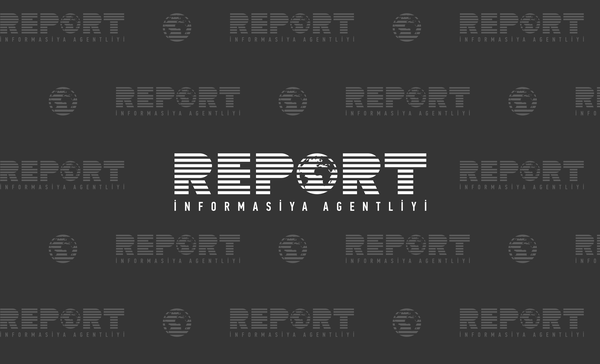
 Business1 month ago
Business1 month agoHead of OSCE PA delegation: Elimination of Minsk process is another diplomatic success
-
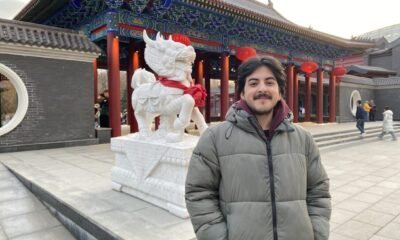
 Politics3 weeks ago
Politics3 weeks agoFriday Wrap-Up: Nurlan Libre’s detention extended, Ismayil Taghiyev declared undesirable, exiled blogger sentenced to 6 years
-
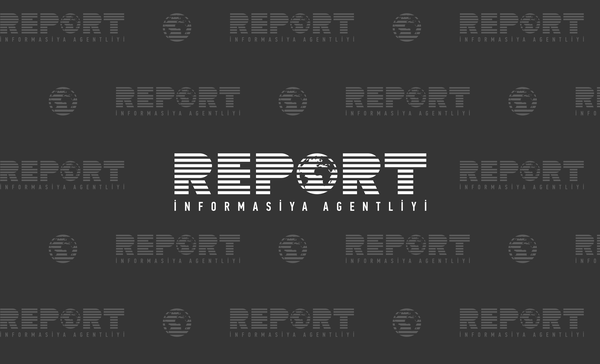
 Politics4 weeks ago
Politics4 weeks agoBaku invites Korean companies to invest in renewable energy projects
-
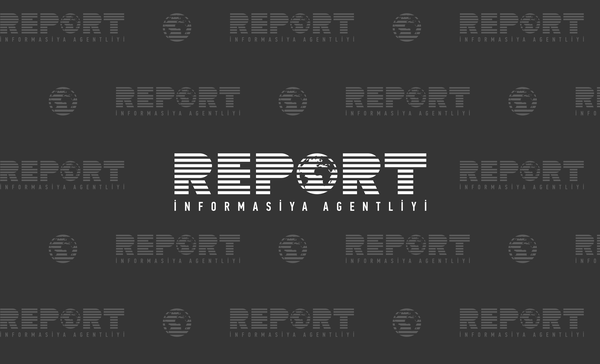
 Politics1 month ago
Politics1 month agoUS expects to send astronauts to Mars in early 2030s — NASA
-
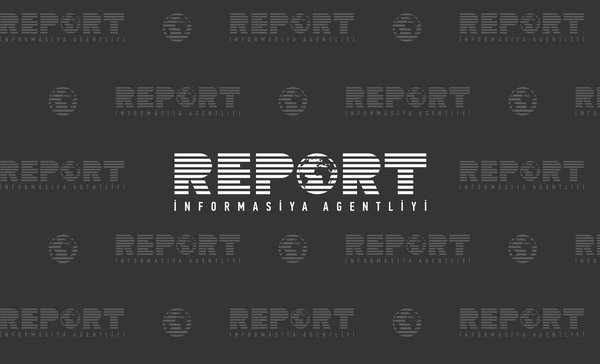
 Politics1 month ago
Politics1 month agoBaku hosts opening ceremony of 49th ICPC World Finals
-
Business1 month ago
Travel Tomorrow: Resumption of Baku-Aghdam railway route – symbol of large-scale revival of region
